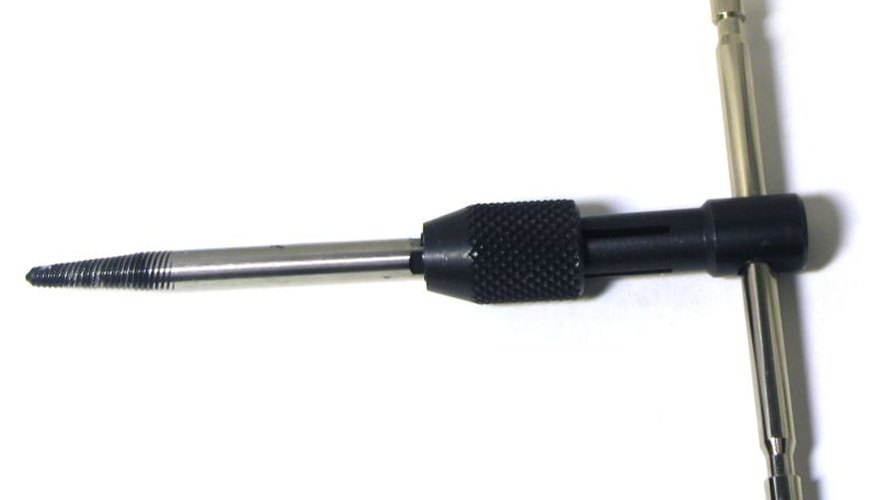Easy out bolt or screw extractors can be used to remove a stubborn screw or bolt that has seized up because of over-tightening, rust or cross threading. Properly used, easy outs can often save you more expensive and time-consuming procedures such as reboring and re-tapping, which often must be performed by a machinist. This step-by-step guide for the proper use of easy outs should benefit those faced with having to remove a broken, seized screw or bolt.
- Easy out bolt or screw extractors can be used to remove a stubborn screw or bolt that has seized up because of over-tightening, rust or cross threading.
- This step-by-step guide for the proper use of easy outs should benefit those faced with having to remove a broken, seized screw or bolt.
Prepare the seized bolt properly before using an easy out. This is vital to improve the chance that you will succeed in removing the broken-off bolt or screw. Soak the stubborn bolt or screw with a light penetrating oil. Where applicable, orient the troublesome screw or bolt so gravity aids the lubricant in soaking down to the threads. Where this is not possible, use an aerosol-type penetrating oil with the plastic extension inserted in the spray nozzle to get the lubricant to thread level. After generous application of penetrating oil, allow the lubricant some time to soak in.
Using a centre punch and a ball peen hammer, place the point of the centre punch in the exact centre of the broken bolt or screw and firmly tap the striking surface of the punch to score the top of the bolt or screw. This will aid in keeping a drill bit on centre in the next step and can also help to dislodge rust from the threads.
Select a metal cutting drill bit to centre drill the broken bolt or screw. Select the largest size bit that can be safely used without concern for over-drilling and damaging the receiving threads of the hole in which the broken bolt or screw was originally installed. This is the most critical step as the hole must be drilled almost perfectly on centre. Use a drill bit guide if you lack confidence in drilling the hole properly using only free hand.
Select the proper size easy out extractor according to the size of drill bit used. Easy out extractors come in sets of left-hand threaded extractor tools. Each extractor has a drill bit size stamped on it, making selection a simple matter. Insert the easy out into the hole drilled in the centre of the broken bolt or screw and then gently tap it home with a hammer so it bites into the metal of the bolt or screw.
- Using a centre punch and a ball peen hammer, place the point of the centre punch in the exact centre of the broken bolt or screw and firmly tap the striking surface of the punch to score the top of the bolt or screw.
- Insert the easy out into the hole drilled in the centre of the broken bolt or screw and then gently tap it home with a hammer so it bites into the metal of the bolt or screw.
Use either an adjustable T-handle wrench such as those used with tap and die sets or a ratchet with properly sized adaptor attachment to turn the easy out extractor. If neither is available, use a properly sized end wrench, adjustable crescent-type wrench or a pair of vice grips. Be patient and exercise great care while attempting to back out the broken bolt or screw. Easy out extractors are manufactured from hard but brittle steel and subjecting them to lateral force can easily cause them to snap, which will leave you in an even worse position than before.
If the easy out loses its metal-to-metal bite, remove the wrench and tap on it again with a ball peen hammer to reseat it and then continue the attempts to turn it. When used properly, easy out extractors will often successfully remove the most stubborn broken bolts and screws.
WARNING
Do not jerk on the wrench while attempting to turn the easy out extractor or subject it to side-to-side force. Always use eye protection when using hammers and punches and when using electric drills.
